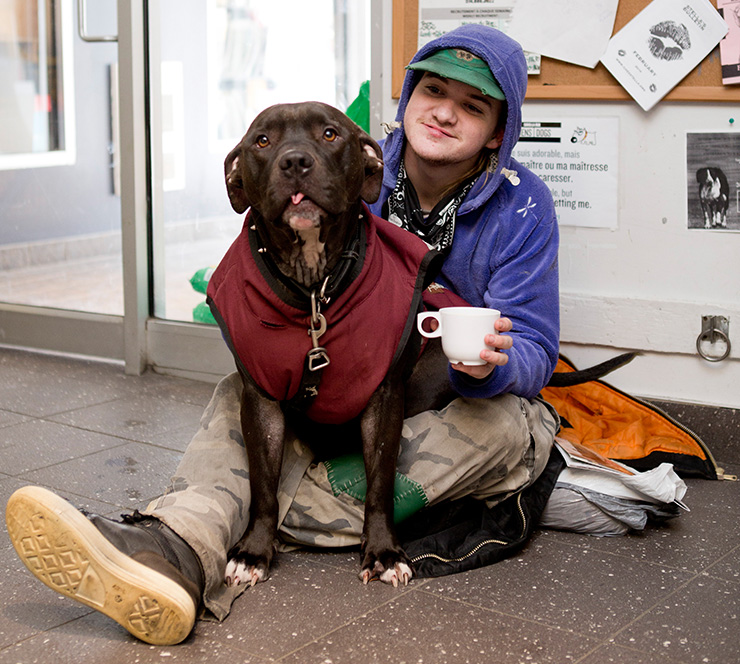
Youth Homelessness
The causes and realities of youth homelessness are different from adult homelessness and they require solutions that are adapted to these unique challenges.
Some youth are subject to unstable living conditions (sleeping outside, couch surfing, shared housing) and precarious situations with regard to mental health and addictions.
Often, they have dropped out of school and their job prospects are extremely limited.
On top of this, they have little to no experience in what it means to be self-sufficient.
Homelessness is almost never a choice. They want to get off the street.

“Youth homelessness” refers to the situation and experience of young people between the ages of 13 and 24 who are living independently of parents and/or caregivers, but do not have the means or ability to acquire a stable, safe or consistent residence. Definition form THE HOMELESS HUB
What does youth homelessness look like?
- In Canada, an estimated 20% of shelter users (35,000) are young people (Segaert, 2012)
- Roughly two-thirds of homeless youth are male
- Among homeless youth, the LBGTQ2S+ and First Nations communities are overrepresented
- 42% of homeless youth have been in the youth protection system
- 65% have experienced problems at school
CAUSES
- Dysfunctional family situations (violence, abuse, addiction, mental illness)
- Poverty, unemployment/underemployment, lack of affordable housing or housing stability, discrimination (visible minorities, LGBTQ, First Nations) (reference document : Coming of Age)
- Failure of the healthcare system (physical and mental health) and youth protection services
- Combination of several factors which cause youth to leave home and live on the street (gradual process rather than a specific event)
- Broken ties with family, friends and community
REALITIES
- Wears away at their physical and mental well-being
- Cuts them off from support systems in their lives
- Subjects them to many obstacles, such as discrimination
- Keeps them in, no matter how badly they want out
- Exposes them to instability and an overwhelming number of competing stresses (finding housing, earning money, getting enough to eat, making decisions, staying healthy)
- Puts them at risk of engaging in early sexual activity, being exploited and having their safety and security threatened
Your donations are essential for us to continue our mission.




